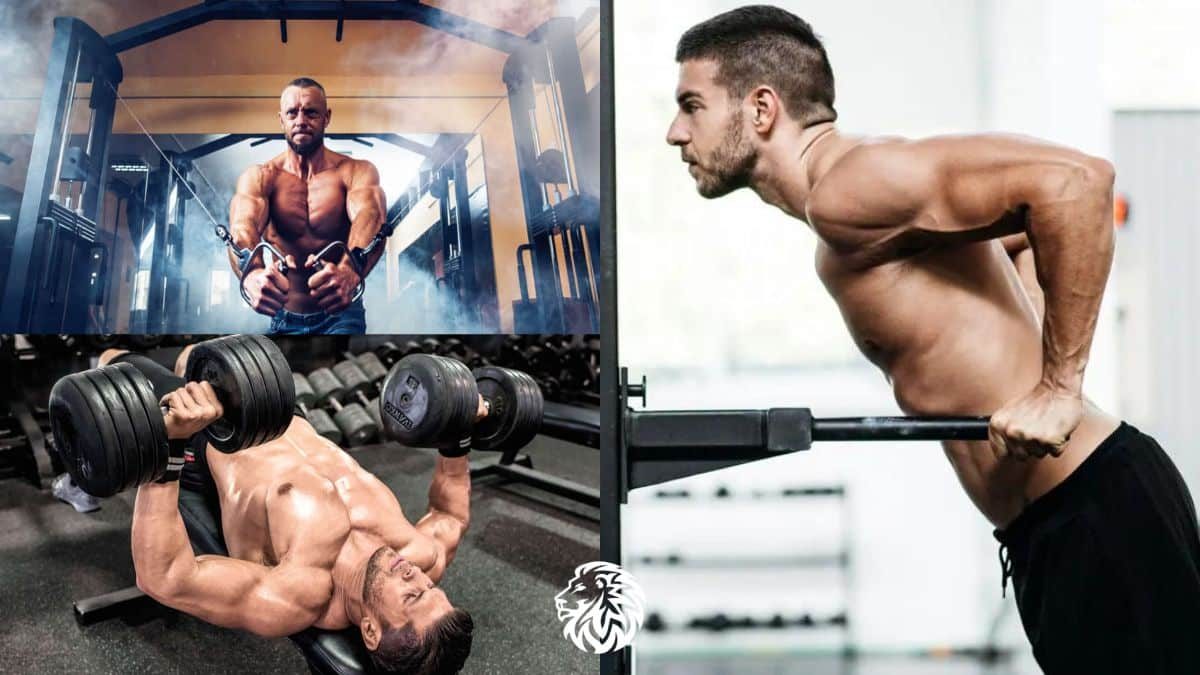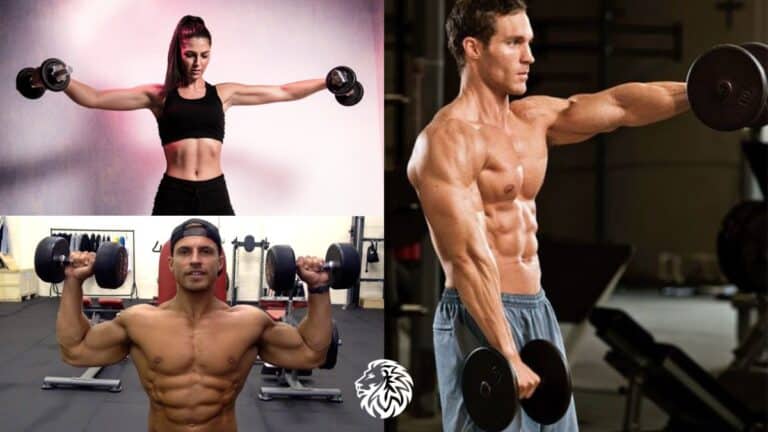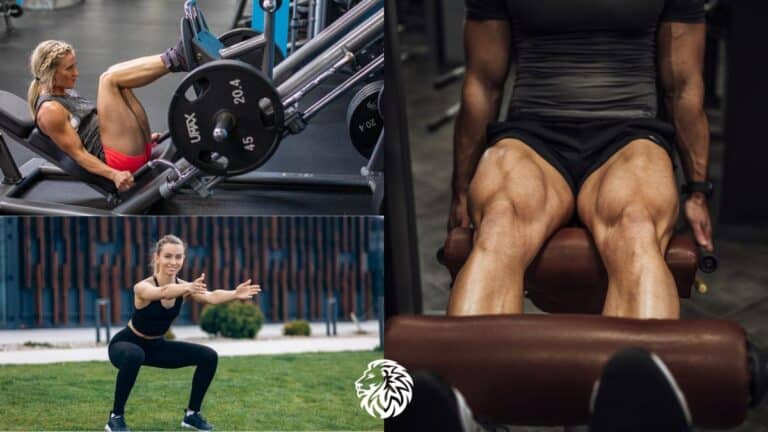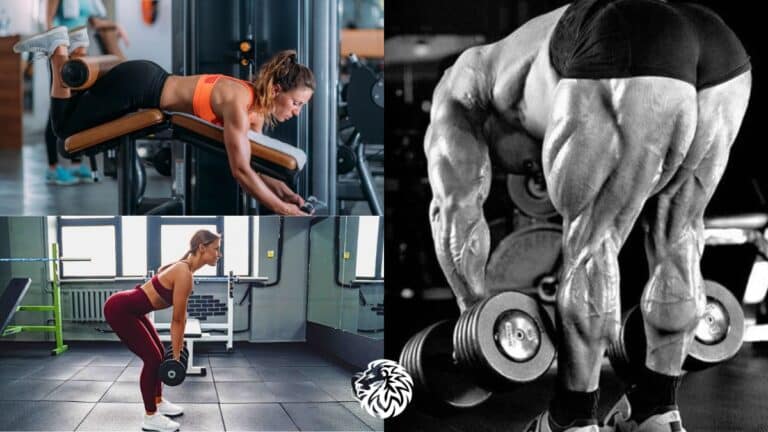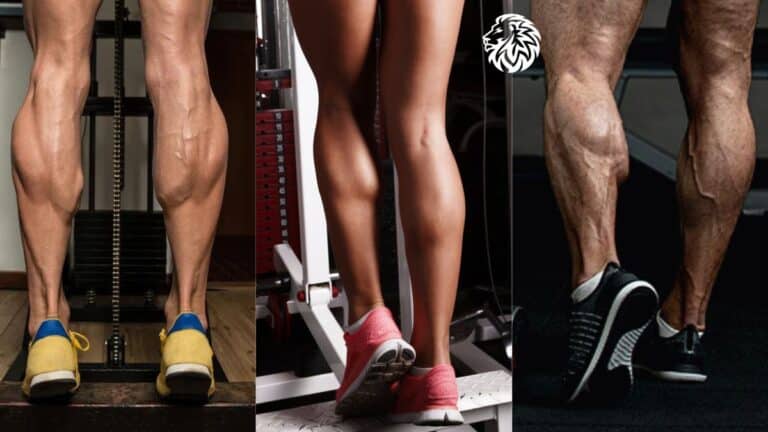The chest, a pivotal area for aesthetic and functional strength, consists of the pectoralis major and pectoralis minor muscles. The pectoralis major, especially, is divided into distinct regions, with the lower pecs being a crucial area for focused development. Targeting the lower pecs using the five best lower chest exercises for defined lower pecs is not just about enhancing appearance. These lower chest exercises play a vital role in achieving a balanced and well-rounded chest.
Understanding the anatomy of the chest is key. The pectoralis major, the larger of the two chest muscles, covers the upper front of the chest and is responsible for movements like pushing and lifting. The lower part of this muscle, often under-emphasized in routine workouts, is essential for achieving a full, defined look. Effective lower chest workouts not only improve the muscle’s size and definition but also contribute to overall upper body strength and stability.
Targeting different parts of the chest can significantly enhance both the appearance and the functional strength of the muscles. While the upper and middle chest regions are often prioritized, the lower chest is just as important for a proportional and powerful chest. The five best lower chest exercises for defined lower pecs are specifically designed to target the lower pecs. These lower chest exercises can correct imbalances, improve posture, and contribute to a more pronounced and sculpted chest.
Incorporating lower chest exercises into a workout routine offers several benefits. These exercises help in overcoming plateaus in chest development, ensuring continuous improvement and growth. Additionally, they contribute to better muscle symmetry, which is not only important for aesthetics but also for overall muscular health and injury prevention.
In summary, focusing on the lower chest is a crucial aspect of a comprehensive chest training program. This article will delve into the five best exercises specifically designed to define and strengthen the lower pecs, providing a guide to achieve a well-rounded and aesthetically pleasing chest. Now lets start learning about the five best lower chest exercises for defined lower pecs.
The 5 Best Lower Chest Exercises for Defined Lower Pecs
1. Decline Bench Press
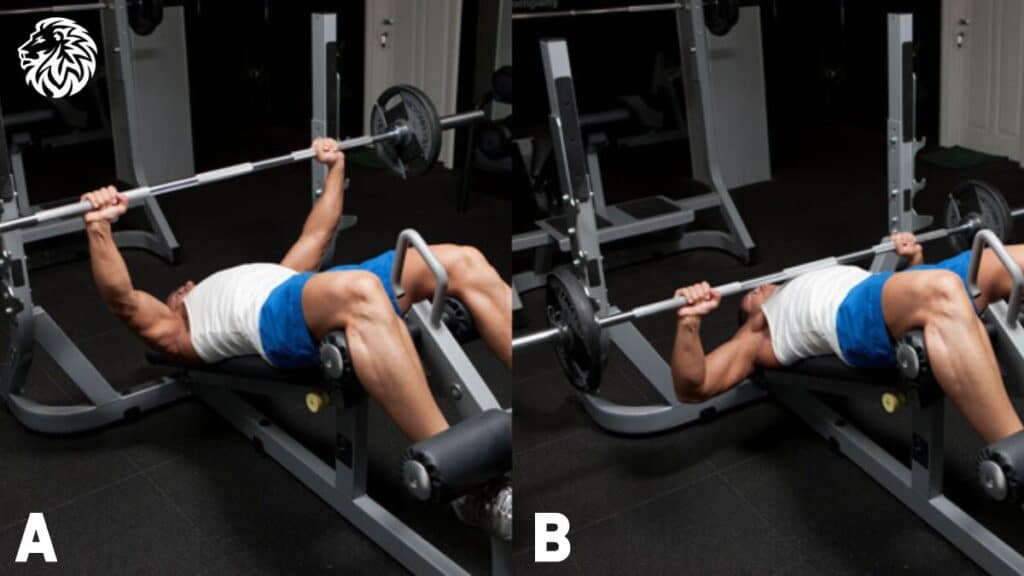
Overview
The Decline Bench Press is a fundamental exercise for targeting the lower portion of the pectoral muscles. By adjusting the angle of the bench to a decline position, this exercise shifts the focus more intensely onto the lower chest, differentiating it from its flat and incline counterparts. This variation is critical for those aiming to achieve a well-defined and proportionate chest.
Execution Technique
- Set Up the Bench: Adjust your bench to a decline angle, typically between 15 to 30 degrees. Ensure it is securely locked in place.
- Positioning: Lie down on the bench with your legs secured at the end. Your back should be flat against the bench.
- Grip and Lift Off: Grip the barbell with your hands slightly wider than shoulder-width apart. Lift the bar off the rack with straight arms, positioning it above your lower chest.
- Lowering the Bar: Inhale as you slowly lower the bar in a controlled manner. Aim to bring it down to just below your chest level, keeping your elbows at about a 45-degree angle from your body.
- Pressing Up: Exhale and press the bar back up to the starting position, using your lower chest muscles to power the movement. Keep your wrists straight and avoid locking your elbows at the top.
- Repeat: Perform the desired number of repetitions while maintaining form.
Benefits
- Targeted Lower Chest Activation: This exercise emphasizes the lower pectoral muscles, essential for a balanced chest development.
- Increased Strength: Regularly including the decline bench press can lead to significant strength gains in the chest, shoulders, and triceps.
- Improved Muscle Definition: This exercise helps in sculpting a more defined lower chest area.
Common Mistakes and Tips
- Arching the Back: Avoid arching your back excessively. Maintain a natural spine alignment throughout the exercise.
- Flaring Elbows: Keep your elbows slightly tucked in to reduce stress on the shoulders.
- Excessive Weight: Do not overload the bar. Use a weight that allows you to complete each set with proper form.
- Rapid Movements: Avoid rushing the reps. Use a controlled tempo to maximize muscle engagement and reduce the risk of injury.
- Breathing Technique: Remember to inhale on the way down and exhale on the press up. Proper breathing aids in maintaining control and stability.
Incorporating the decline bench press into your chest routine can significantly enhance lower chest development and overall chest aesthetics. As with any exercise, start with a manageable weight to master the technique and gradually increase as you become more comfortable and stronger.
2. Dip (Chest Variation)
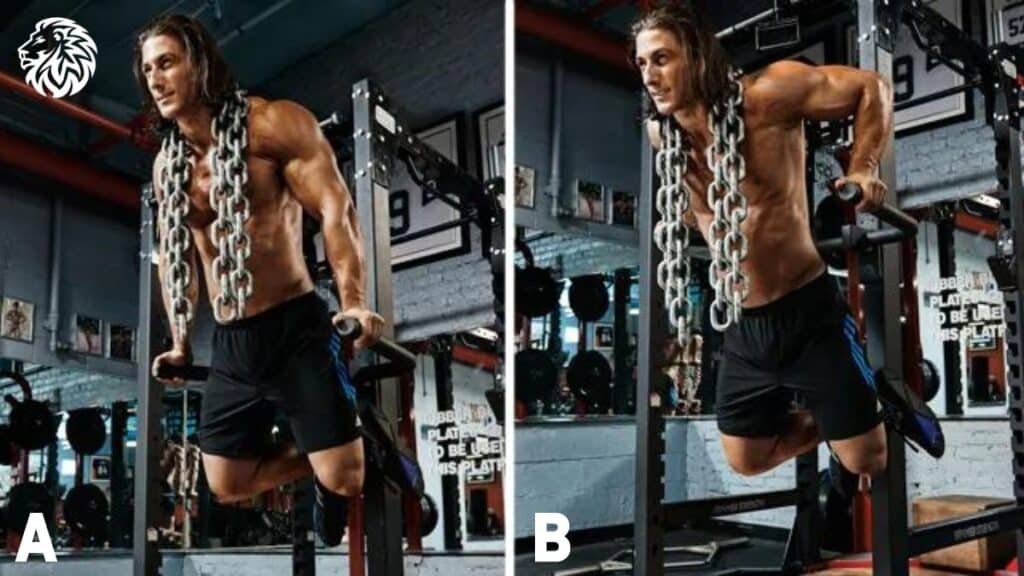
Overview
The Dip, particularly its chest variation, is a potent bodyweight exercise that effectively targets the lower chest. Unlike the triceps-focused dip, the chest variation involves a specific body angle and movement pattern that emphasizes the lower pectoral muscles. This exercise is not only versatile, requiring minimal equipment, but also a powerful tool for enhancing chest definition and strength.
Execution Technique
- Starting Position: Position yourself on parallel bars, gripping each bar firmly. Lift your body until your arms are fully extended, keeping your shoulders down and away from your ears.
- Lean Forward: Slightly lean your torso forward; this angle is crucial for targeting the lower chest. Ensure your feet are behind you, either crossed or straight.
- Lowering Phase: Inhale as you slowly lower your body by bending your elbows. Keep leaning forward as you descend until your shoulders are slightly below your elbows or you feel a good stretch in your chest.
- Pushing Up: Exhale and push yourself back up to the starting position, focusing on using your lower chest muscles. Your elbows should not flare out too much to maintain the emphasis on the chest.
- Repetition: Perform the desired number of repetitions while maintaining the forward lean and controlled movements.
Benefits
- Lower Chest Engagement: This dip variation specifically targets the lower part of the pectoral muscles, essential for a fully developed chest.
- Triceps and Shoulder Strengthening: While the focus is on the lower chest, it also significantly engages the triceps and shoulders, making it a compound exercise.
- Enhanced Muscle Definition: Regular performance can lead to improved muscle definition and size in the lower chest.
Variations and Progressions
- Weighted Dips: Once you are comfortable with your body weight, add extra resistance using a weight belt or a dumbbell held between your feet.
- Assisted Dips: If you find the exercise too challenging initially, use an assisted dip machine or resistance bands for support.
- Narrow Grip: Altering the grip width can change the emphasis on the muscle groups; a narrower grip will involve more triceps.
- Slow Tempo Dips: Performing the exercise with a slower tempo increases time under tension, which can be beneficial for muscle growth.
Dips, especially when performed with a chest focus, are an exceptional exercise for lower chest development. They can be easily incorporated into any chest workout and adjusted according to your fitness level and goals. Remember, proper form and controlled movements are key to maximizing benefits and preventing injury.
3. Cable Fly (Decline Angle)
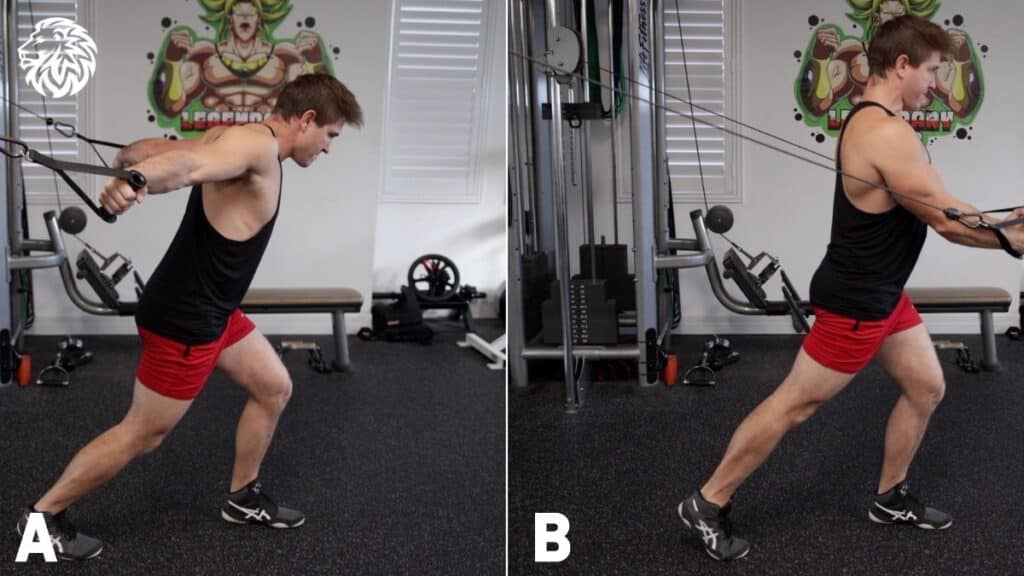
Overview
The Cable Fly with a decline angle is a highly effective exercise for isolating and targeting the lower portion of the chest muscles. Unlike traditional free-weight exercises, the constant tension provided by the cable machine allows for a more focused engagement of the lower pectorals. This variation mimics the movement of a decline bench press but offers a different muscle activation pattern due to the nature of the cable setup.
Execution Technique
- Machine Setup: Position the pulleys to a high setting on a dual cable machine. Choose an appropriate weight on each side.
- Starting Position: Stand in the middle of the cable machine, grasping each handle with your palms facing forward. Lean slightly forward at your hips and stagger your stance for stability.
- Movement Initiation: With a slight bend in your elbows, bring your hands together in front of you at waist level. The movement should be like hugging a large barrel, focusing on bringing the hands together using your lower chest muscles.
- Contraction and Return: Once your hands meet at the lowest point that’s comfortable, squeeze your chest muscles briefly before slowly returning to the starting position with control.
- Repetition: Perform the desired number of repetitions, maintaining the forward lean and controlled motion throughout.
Benefits
- Lower Chest Isolation: The decline angle specifically targets the lower pectoral muscles, enhancing definition and strength in this area.
- Constant Muscle Tension: The cables provide continuous tension on the chest muscles throughout the entire range of motion, maximizing muscle activation.
- Versatility and Control: The exercise allows for adjustments in weight and angle, accommodating different skill levels and targeting specifics.
Safety Tips
- Avoid Overextending: Don’t stretch your arms too far back at the start of the movement, as this can strain the shoulder joints.
- Controlled Movements: Ensure the movement is slow and controlled, especially when returning to the start position, to avoid jerky motions.
- Appropriate Weight Selection: Start with a lighter weight to ensure you can perform the exercise with proper form, gradually increasing as you become more comfortable.
- Maintain Posture: Keep your chest up and shoulders back throughout the exercise to prevent rounding the back and to maintain focus on the lower chest.
- Breathing Technique: Exhale as you bring the handles together and inhale as you return to the starting position.
Incorporating the decline angle cable fly into your chest workout routine can significantly contribute to developing a well-defined lower chest. It’s an excellent alternative to free weights, providing a unique tension that can lead to impressive muscle growth and definition.
4. Incline Push-up
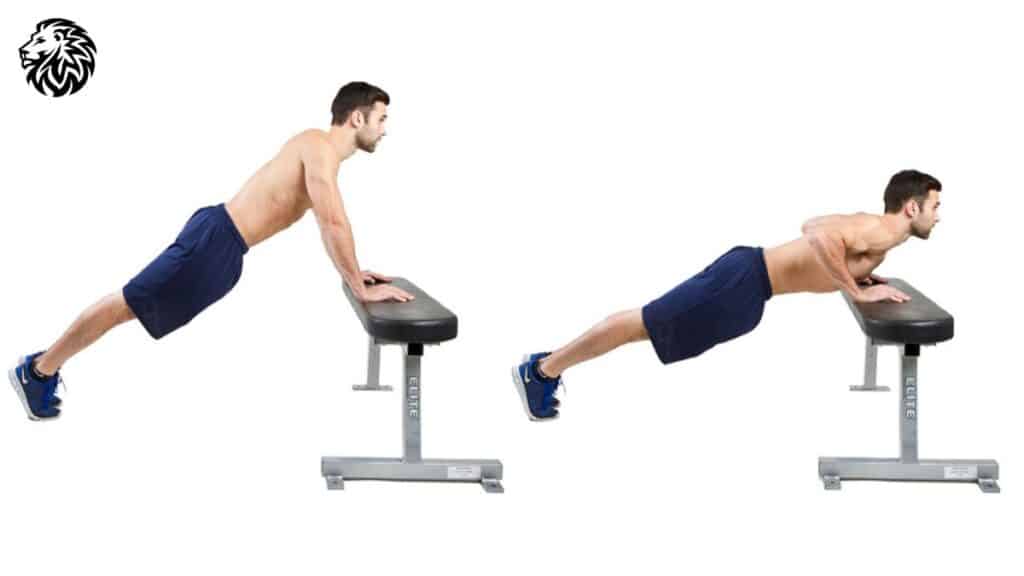
Overview
Incline Push-ups are an accessible and versatile bodyweight exercise that effectively targets the lower chest. By performing push-ups with your hands elevated on an incline, such as a bench or step, the angle of the body shifts the focus more towards the lower pectoral muscles. This variation of the classic push-up is excellent for those at various fitness levels and can be easily incorporated into any workout routine.
Execution Technique
- Find an Elevated Surface: Use a sturdy bench, step, or any stable elevated surface that is about knee to waist high.
- Position Your Hands: Place your hands slightly wider than shoulder-width apart on the edge of the surface.
- Starting Position: Step your feet back so your body forms a straight line from head to heels. Engage your core and glutes to keep your body stable.
- Lower Your Body: Inhale as you bend your elbows and lower your chest towards the edge of the surface. Keep your elbows at a 45-degree angle to your body.
- Press Up: Exhale as you push through your hands to raise your body back up to the starting position, focusing on using your lower chest muscles.
- Repetition: Perform the desired number of repetitions, maintaining a straight body line and controlled movements.
Benefits
- Lower Chest Activation: The incline angle places more emphasis on the lower pectoral muscles, aiding in their development.
- Core and Arm Engagement: Besides the lower chest, incline push-ups also work the core, shoulders, and triceps, making it a compound exercise.
- Adaptability: This exercise can be easily adapted for different fitness levels and does not require any special equipment.
Modifications
- Change the Incline Height: Adjusting the height of the incline can increase or decrease the difficulty of the exercise. A higher incline is easier, while a lower incline is more challenging.
- Vary Hand Positions: Altering the placement of your hands (wider, narrower, or changing the angle) can target different aspects of the chest and arms.
- Pulse at the Bottom: Add a small pulsing movement at the bottom of the push-up to increase intensity and time under tension.
- One-Legged Incline Push-up: Lift one foot off the ground while performing the push-up for an added core stability challenge.
Incline Push-ups are an excellent exercise for those looking to strengthen and define their lower chest without needing access to a gym or specialized equipment. With various modifications available, it’s a versatile exercise that can be tailored to challenge individuals at any fitness level.
5. Chest Press Machine (Low to High)
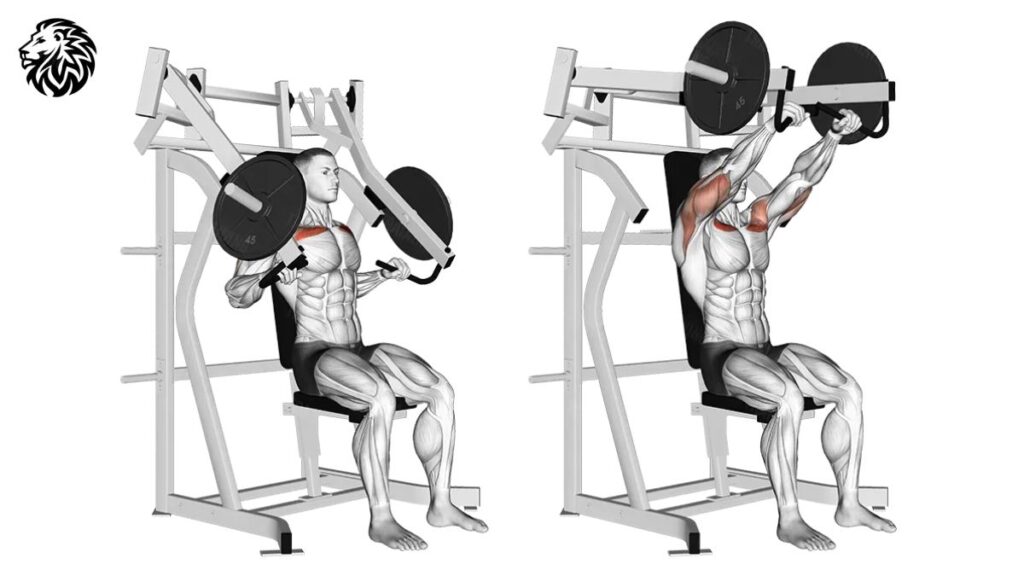
Overview
The Chest Press Machine, particularly with a low-to-high motion, is a specialized exercise targeting the lower pectoral muscles. This variation involves pressing from a lower position upwards and outwards, mimicking the motion of an upward incline press. It’s an excellent tool for isolating the lower chest, providing a controlled movement that is difficult to replicate with free weights.
Execution Technique
- Machine Setup: Adjust the seat of the chest press machine so that the handles are aligned with the lower part of your chest. Ensure the backrest supports your back comfortably.
- Starting Position: Sit in the machine with your back flat against the pad. Grip the handles with your palms facing down, arms aligned with the lower chest.
- Pressing Motion: Push the handles upwards and slightly outwards in a smooth arc. Your hands should move from a lower position near your abdomen to a higher position in line with your upper chest.
- Controlled Return: After reaching the top of the movement, slowly return to the starting position, maintaining control and resisting the weight as you lower your arms.
- Repetition: Perform the desired number of repetitions, focusing on a controlled tempo and the engagement of your lower chest muscles.
Benefits
- Isolation of Lower Chest: This machine specifically targets the lower portion of the pectorals, promoting growth and definition in this area.
- Consistent Resistance: The machine provides steady resistance throughout the entire range of motion, ensuring constant muscle engagement.
- Strength Building: Regular use can contribute to overall chest strength and endurance, benefiting other upper body exercises.
Safety Considerations
- Correct Seat Positioning: Make sure the seat is adjusted so that you press upwards in a natural motion without straining your shoulders.
- Avoid Locking Elbows: Keep a slight bend in your elbows at the top of the movement to prevent joint strain.
- Start with Moderate Weight: Begin with a weight that allows you to perform the exercise with proper form and gradually increase as you gain strength.
- Smooth Movements: Avoid jerky or rapid motions, as these can lead to injury and reduce the effectiveness of the exercise.
- Full Range of Motion: Ensure that you complete the full movement, from the lowest point to the full extension, to maximize the engagement of the lower chest muscles.
The low-to-high chest press machine is a fantastic addition to any chest workout routine, particularly for those looking to enhance the size and shape of their lower pectorals. Its ability to isolate the lower chest, coupled with the safety and control of a machine, makes it a valuable exercise for beginners and experienced gym-goers alike.
Weekly Lower Chest Exercise Routine
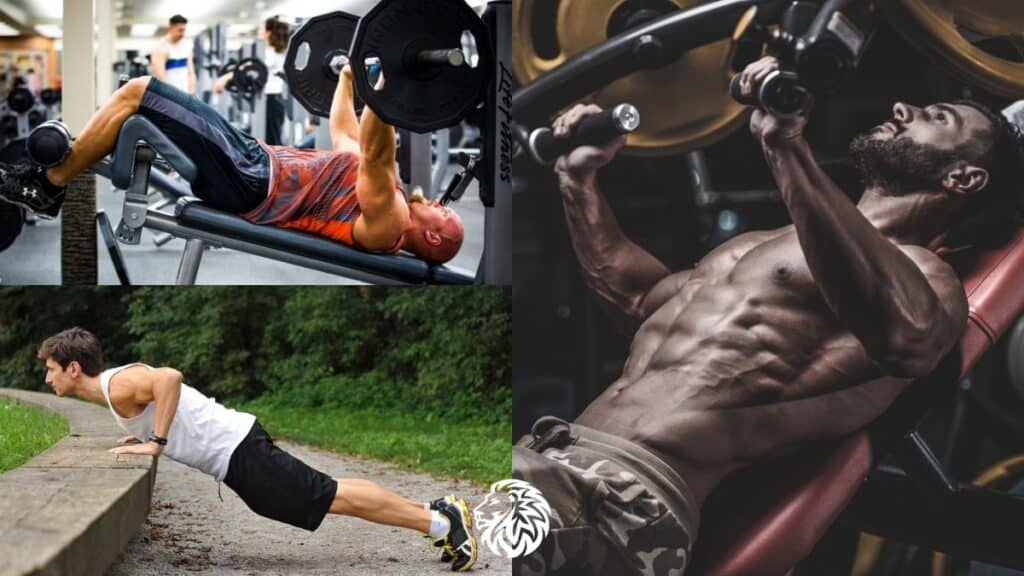
This routine incorporates the five key exercises discussed above, designed to target and strengthen the lower chest. It’s structured to allow adequate rest and recovery, which is crucial for muscle growth and preventing overtraining.
Day 1: Heavy Lifting Focus
- Decline Bench Press
- Sets: 4
- Reps: 6-8
- Rest: 2 minutes between sets
- Chest Press Machine (Low to High)
- Sets: 3
- Reps: 8-10
- Rest: 90 seconds between sets
Day 3: Bodyweight and Cable Work
- Dip (Chest Variation)
- Sets: 3
- Reps: 10-12 (or until failure if you can do more)
- Rest: 90 seconds between sets
- Cable Fly (Decline Angle)
- Sets: 3
- Reps: 12-15
- Rest: 60 seconds between sets
Day 5: Mixed Techniques
- Incline Push-up
- Sets: 4
- Reps: 12-15 (or until failure)
- Rest: 60 seconds between sets
- Decline Bench Press (with lighter weight and higher reps)
- Sets: 3
- Reps: 15-20
- Rest: 90 seconds between sets
General Tips:
- Warm-up: Begin each session with a 5-10 minute warm-up to prepare your muscles and joints. This could include light cardio and dynamic stretching.
- Cool Down: End each workout with a cool-down, including stretching to aid recovery and flexibility.
- Progressive Overload: Gradually increase the weight or resistance to continue challenging your muscles.
- Form and Technique: Prioritize proper form over lifting heavier weights to prevent injury.
- Hydration and Nutrition: Stay hydrated and ensure you’re eating a balanced diet to support muscle recovery and growth.
- Rest Days: Take at least one or two days off between workouts to allow your muscles to recover. On non-lifting days, light cardio or other activities can be beneficial.
Remember, individual needs and capabilities vary, so feel free to adjust this routine to suit your fitness level and goals. If you’re new to these exercises, or if you have any pre-existing health conditions, it’s advised to consult with a fitness professional or healthcare provider.
Conclusion
In summary, this article has explored five effective exercises specifically designed to target and strengthen the lower chest muscles: Decline Bench Press, Dip (Chest Variation), Cable Fly (Decline Angle), Incline Push-up, and Chest Press Machine (Low to High). Each of these exercises offers unique benefits and techniques for enhancing the lower pecs, a crucial component for a well-rounded and aesthetically pleasing chest.
- Decline Bench Press: A fundamental exercise focusing on overall strength and lower chest development.
- Dip (Chest Variation): A versatile bodyweight movement that targets the lower chest while also engaging triceps and shoulders.
- Cable Fly (Decline Angle): Provides constant tension on the lower pecs, enhancing muscle isolation and definition.
- Incline Push-up: An accessible and adaptable exercise for lower chest targeting, suitable for various fitness levels.
- Chest Press Machine (Low to High): Offers controlled and isolated movements, ideal for targeted lower chest engagement.
Integrating these exercises into your chest workout regimen can significantly enhance the development of your lower pecs. Remember, the variety in your exercise routine not only helps in achieving a balanced and symmetrical chest but also aids in preventing plateaus in muscle growth and strength gains.
Consistency in your workout routine and maintaining proper technique are paramount for muscle development and injury prevention. Always focus on executing each movement with control and precision, and be mindful of your body’s signals to avoid overexertion.
By regularly incorporating these lower chest exercises, you can expect to see noticeable improvements in muscle definition, strength, and overall chest aesthetics. Whether you’re a beginner or an experienced fitness enthusiast, these exercises can be modified to suit your individual fitness level and goals, making them a valuable addition to any workout plan.
References and Further Reading
- Medical News Today. (n.d.). Everything you need to know about chest pain. Retrieved from https://www.medicalnewstoday.com/articles/324490
- Muscle & Fitness. (n.d.). 5 Best Exercises to Build Your Lower Chest. Retrieved from https://www.muscleandfitness.com/workouts/workout-tips/5-best-exercises-build-your-lower-chest/
- Healthline. (n.d.). 9 Effective Lower Chest Exercises. Retrieved from https://www.healthline.com/health/fitness-exercise/lower-chest-exercises%231
- Men’s Health. (n.d.). The Best Lower Chest Workout Moves to Build Your Pecs. Retrieved from https://www.menshealth.com/fitness/a39464129/lower-chest-workouts/
- Bodybuilding.com. (n.d.). 7 Training Tips to Power Up Your Lower Chest. Retrieved from https://www.bodybuilding.com/content/7-training-tips-to-power-up-your-lower-chest.html
